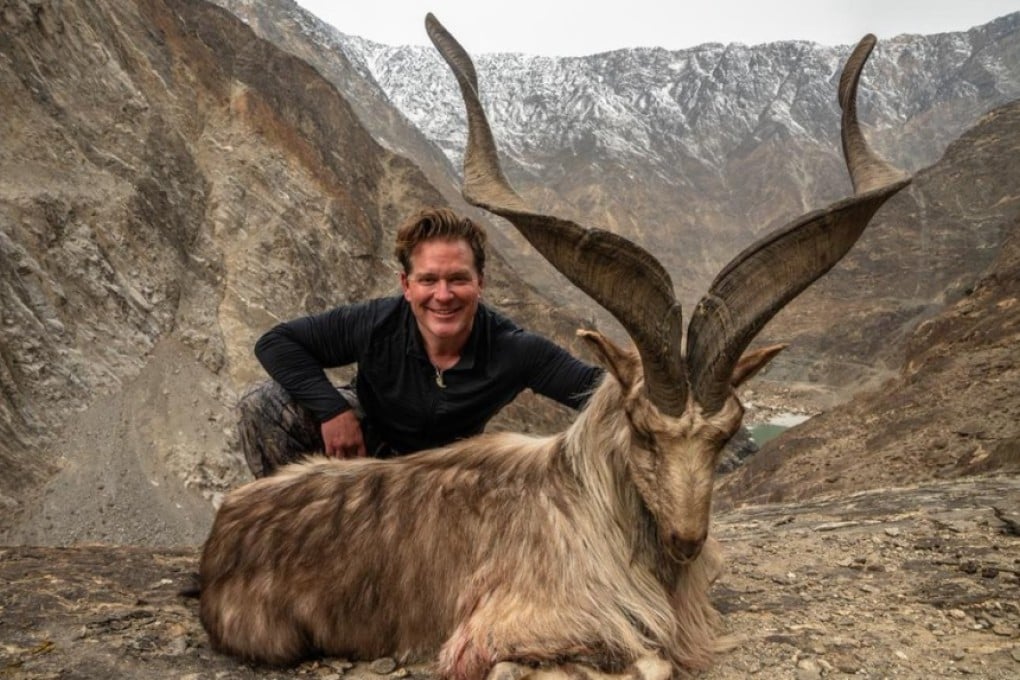US trophy hunter Bryan Kinsel Harlan pays US$110,000 to kill rare Astore markhor mountain goat in Pakistan. Is he helping save the species?
- Bryan Kinsel Harlan of Texas high-fived guides after killing the magnificent male goat with an ‘easy and close shot’
- The shooting drew an angry reaction, but supporters of such hunts say they have revived Astore markhor numbers by giving locals an incentive not to poach them

The photograph, published last week in Pakistani newspapers, was stunning. It showed a magnificent mountain goat, with huge, symmetrically spiral horns, nestled on a rock and surrounded by breathtaking snowy mountains, with a man kneeling and smiling behind him.
It took a few seconds to realise that the animal, a rare, wild Astore markhor, was dead. The caption described the man as an American hunter who had paid a record US$110,000 to shoot it on a tourist expedition to Pakistan’s northern Himalayan region of Gilgit-Baltistan.
“It was an easy and close shot. I am pleased to take this trophy,” the hunter, identified as Bryan Kinsel Harlan, was quoted as saying.
His home state or city was not identified, but his Pakistani guides said he is from Texas, and a man by the same name and appearance who features with kills on internet hunting sites is a Dallas mortgage banker.
American wildlife official’s African hunting spree: giraffe, leopard, warthog and a baboon family
The story drew immediate expressions of sorrow and indignation on social media here.